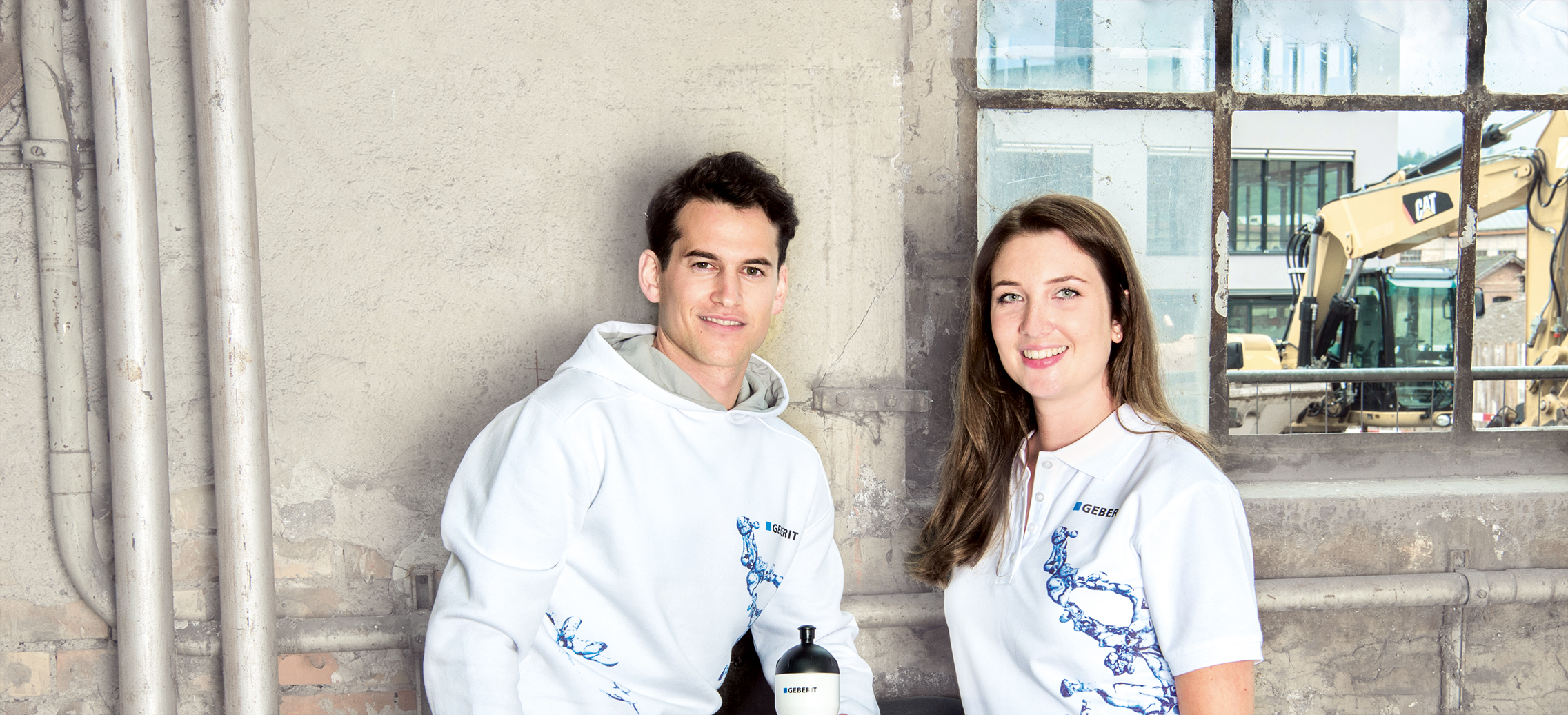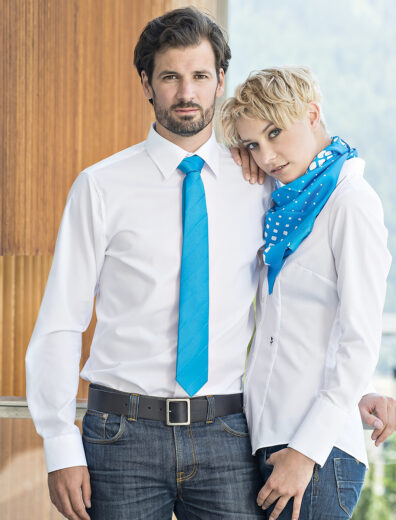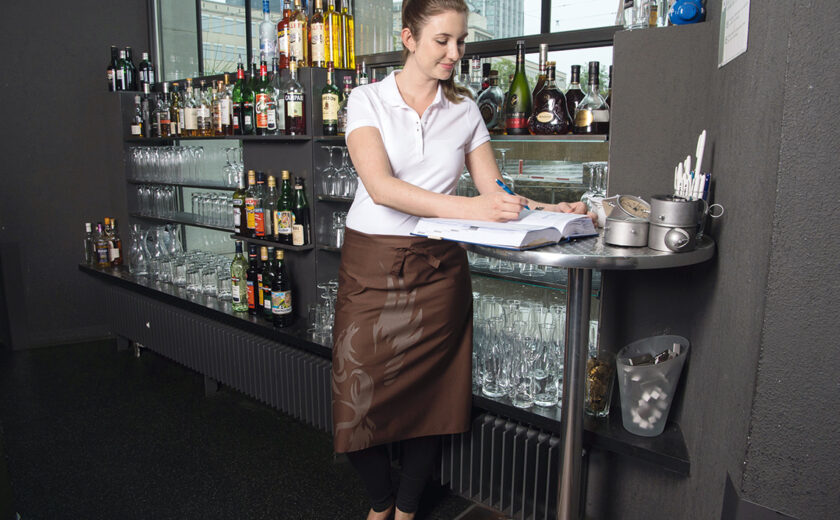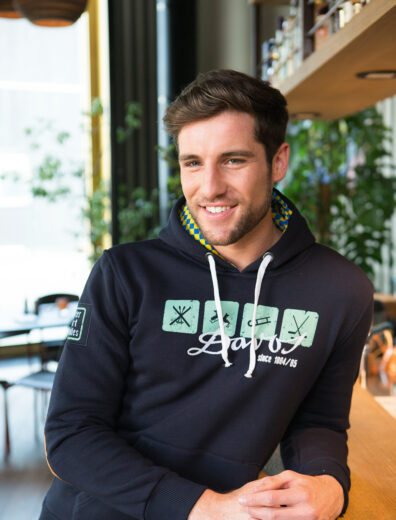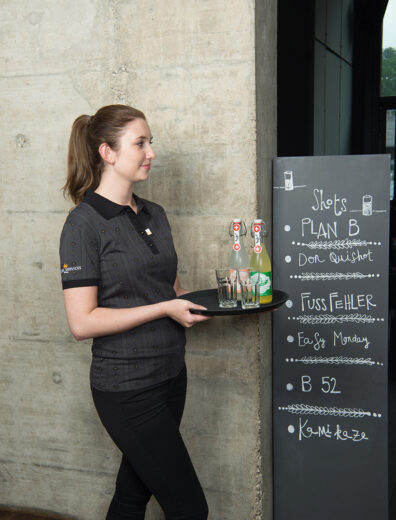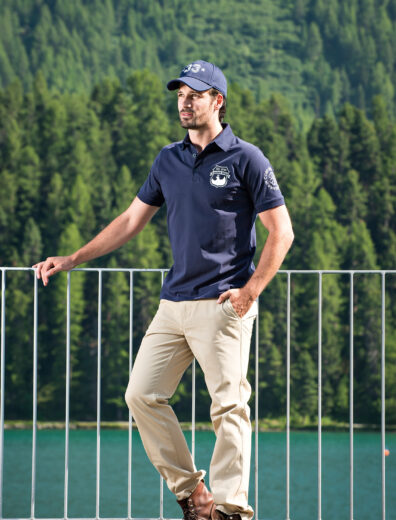On the way to finding the right corporate, team and work clothing, it is worth answering a few questions beforehand. What is particularly practical, what looks high quality and what is the easiest to care for? Should it be a shirt, a T-shirt or a polo? Pure cotton, perhaps a blended fabric or even a functional fiber? And do the employees like it?
- Which textiles do I need?
- Which style suits my company?
- What sizes and shapes?
- What quantities?
- In which colors?
- How should our logo be integrated?
- Who should I contact?
Choosing the right clothing for your own company, restaurant, workshop or practice is not easy. The functional requirements of the clothing are just as important as the aesthetic match with the existing or desired external appearance of the company. It has to do justice to everything and everyone, look good, last a long time and therefore be worth the investment. In the following chapters, we want to make it as easy as possible for you to decide which clothing is right for your company.
Which textiles do I need?
First of all, you should consider how much uniform clothing you need and want. Should your employees be dressed completely uniformly or is one common, uniform item of clothing sufficient? As long as you don’t need a complete uniform, limiting yourself to tops is perfectly adequate. And in terms of fit and cost, shirts, sweaters and jackets are more suitable than pants and skirts. What requirements should your collection be designed for? Do you work indoors or outdoors? Or both? Do you need a summer and winter collection? Are the garments subject to heavy wear and tear and is it important that they are temperature-regulating and sweat-resistant during physical exertion? Can field and office staff wear the same clothes? How often do your employees have contact with customers?
Which style suits my company?
Do you need more discreet clothing that is recognized as uniform within the company, or something that also stands out outside the company, on the street, and draws attention to your company? Are you a young, creative company? Or do you and your customers value a conventional, serious appearance? What statement should the clothing make about our school or association? In any case, when planning your collection, consider what the company should present to the outside world and how your employees would like to present themselves.
It’s not about choosing the smartest or most elegant clothing or following seasonal trends. The most important task of a corporate fashion collection is that it matches the style of the company.
What sizes and styles do I need?
Our garments are characterized by comfortable cuts, colors adapted to the corporate design and the usual high quality of materials and workmanship. Each item of clothing has been designed so that you feel comfortable in it, have plenty of freedom of movement and cut a good figure thanks to careful tailoring. The prerequisite, however, is that each item fits its wearer. And everyone feels differently about whether this is the case. Some people like loose-fitting textiles, others prefer tighter-fitting cuts. That’s why we offer a range of cuts from “classic” to “fitted”.
What quantities? Reserves and repeat orders
This brings us to an important point, both practically and economically. You should ask yourself the following questions: Is the clothing used on a daily basis? Does it get dirty quickly? Is it subject to heavy wear and therefore needs to be replaced more often? Do you need to take into account the fact that many employees only work part-time? Do you have a high staff turnover? We recommend the following as a guideline for an economical clothing concept:
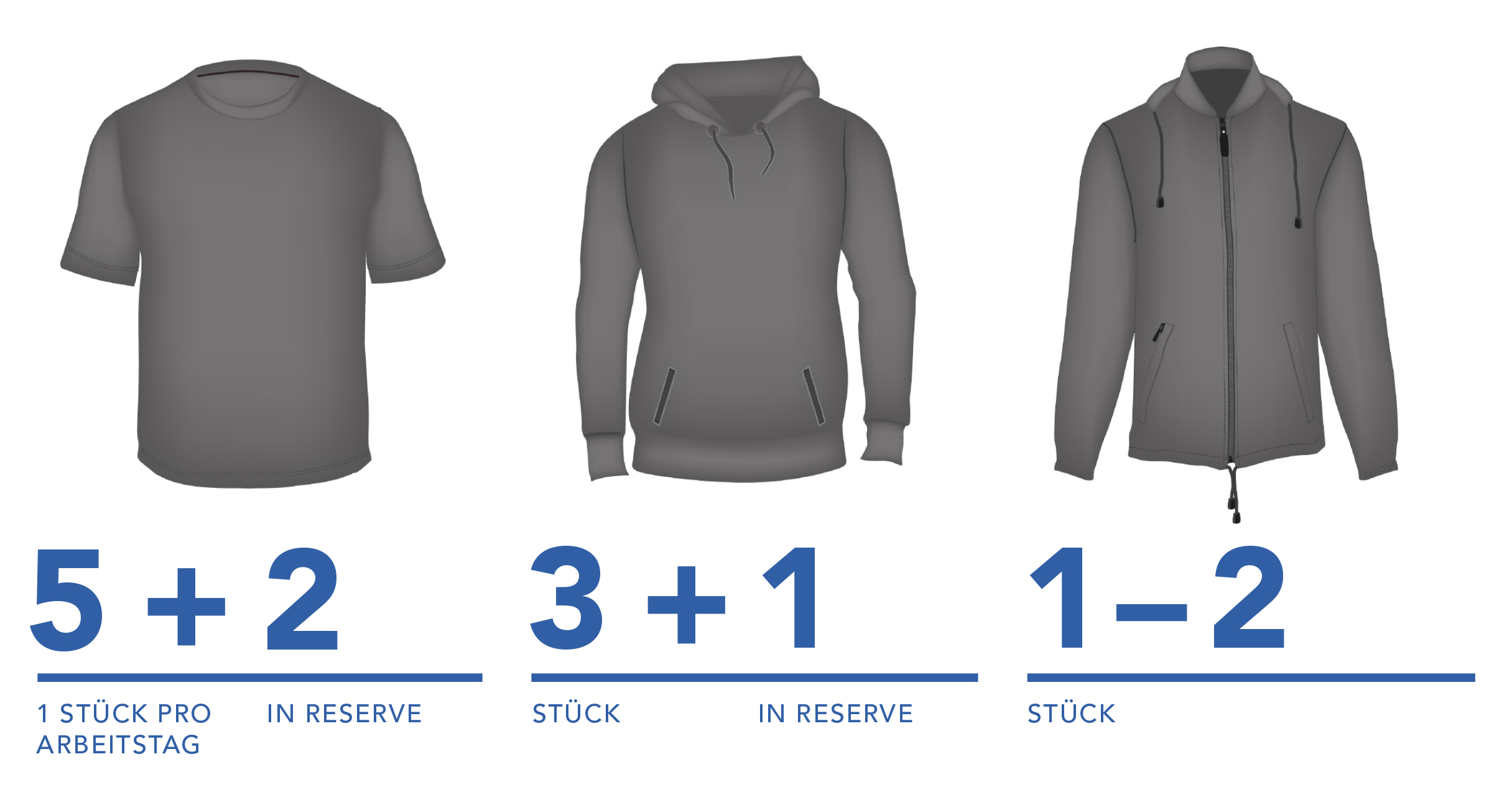
Clothing layer I
If shirts, tops or polo shirts are worn by your employees every day, each employee should have a minimum of five items of clothing that are worn next to the skin. This allows them to put on a fresh garment every day and wash it once a week. However, employees who are in constant contact with customers may need more than one item per day. As a reserve, we recommend two items per wearer, and even three items for heavier use.
Clothing layer II
These textiles are worn over the textiles of clothing layer I and have little or no skin contact. As they do not necessarily have to be washed every day, each employee receives three garments and a spare.
Clothing layer III
In our experience, a single item of clothing is usually sufficient. If your employees spend all their time outdoors, we recommend a combination of two different items for the individual seasons, e.g. a jacket plus a fleece jacket. A spare piece is only necessary in the event of heavy use or a lot of soiling.
Natürlich sollen Sie nicht mehr kaufen, als Sie brauchen, dennoch kalkulieren Sie besser nicht zu knapp. Es ist günstiger, bei der ersten Bestellung direkt einige Teile als Reserve einzuplanen, als später Einzelteile nachzubestellen. Denn, wie immer, grössere Mengen sind günstiger als kleine, da sich alle anfallenden Kosten bei grösseren Stück-
figures can be minimized. This is particularly true if the clothing is to be finished with a logo or similar. The process costs for small quantities per individual item are significantly higher than for larger quantities. For potential new employees, garments in the usual sizes should be included in the initial order.
be cleaned. The same applies if workwear is regularly soiled to such an extent that it is difficult to clean, for example due to oil stains, or if it is exposed to particular mechanical influences and can be damaged as a result. Here too, you should plan for appropriate quantities of spare parts.
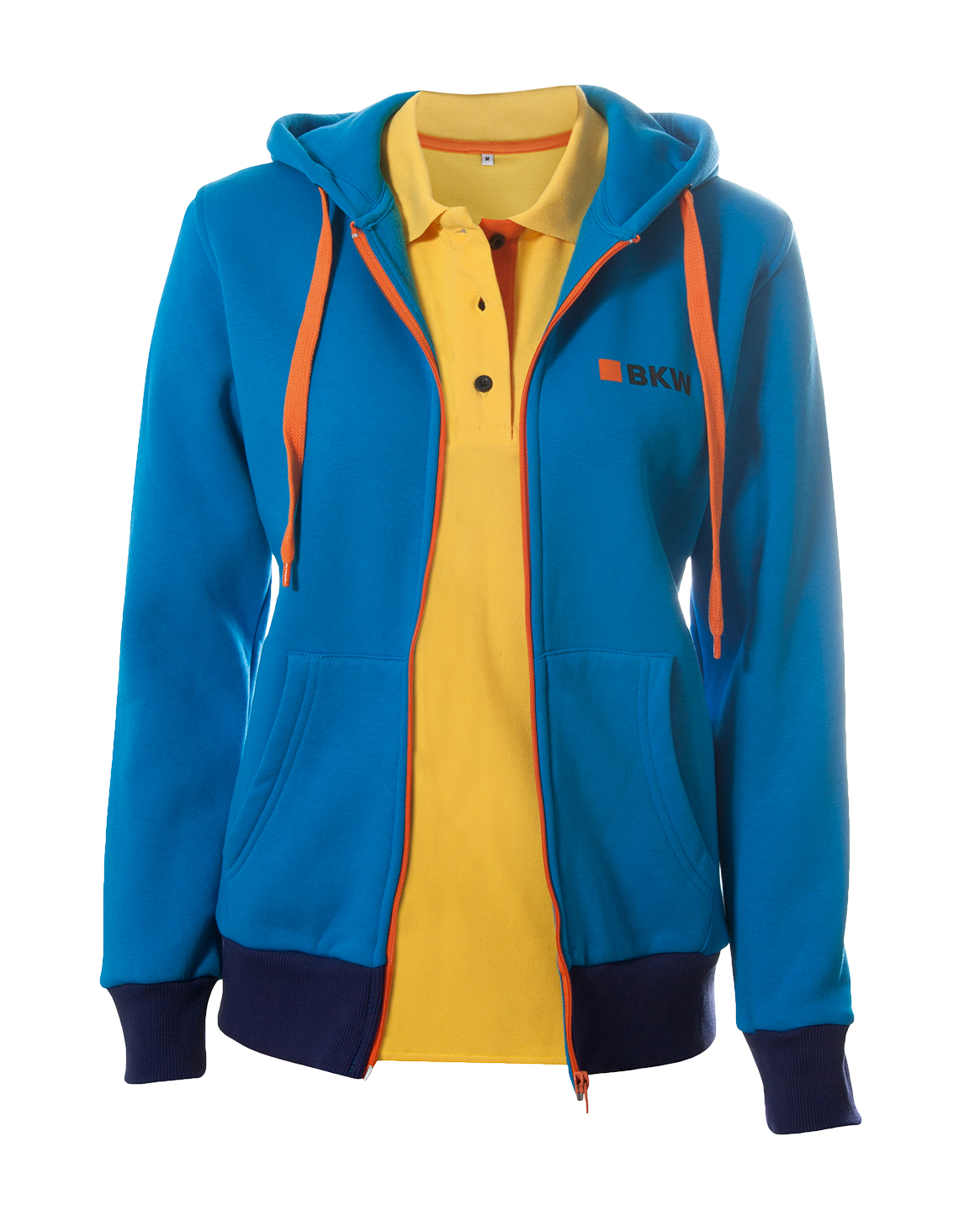
Which colors suit us?
If you already have a corporate color within your corporate design, you can match your corporate fashion collection to it. Otherwise, you can define one or more new corporate colors that suit your company and your employees. Perhaps you want to literally add more color by assigning one or more secondary colors to your existing or new corporate color, let’s call it the primary color? Then the question is which colors, hues and shades go together.
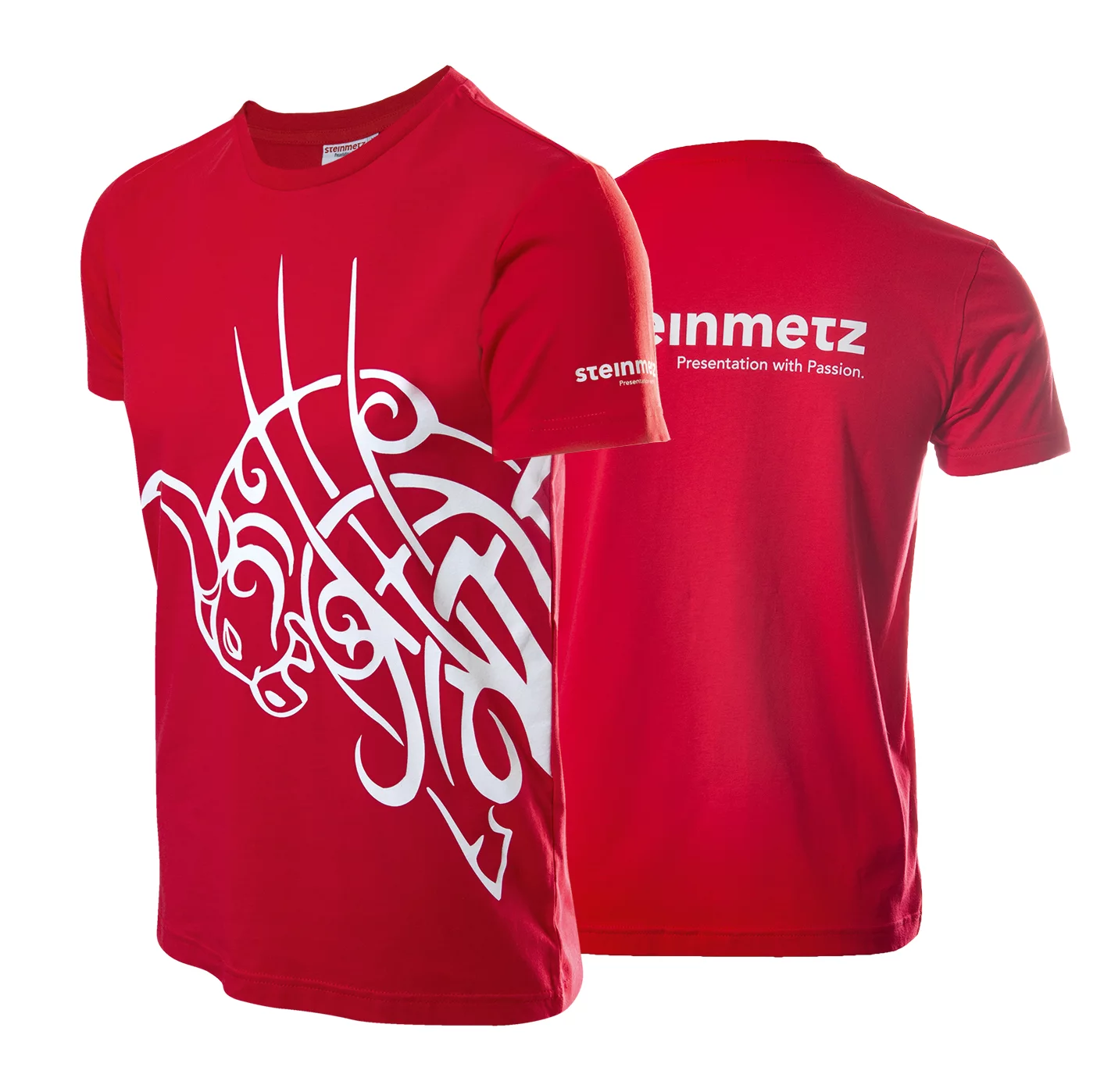
How should our logo be integrated?
The application of your logo, the so-called finishing of the textiles, is another important aspect on the way to perfect corporate wear. Should the logo be applied discreetly or boldly? Which finishing technique is best suited to the selected textiles? Read our article on page 18 “Textile finishing”.
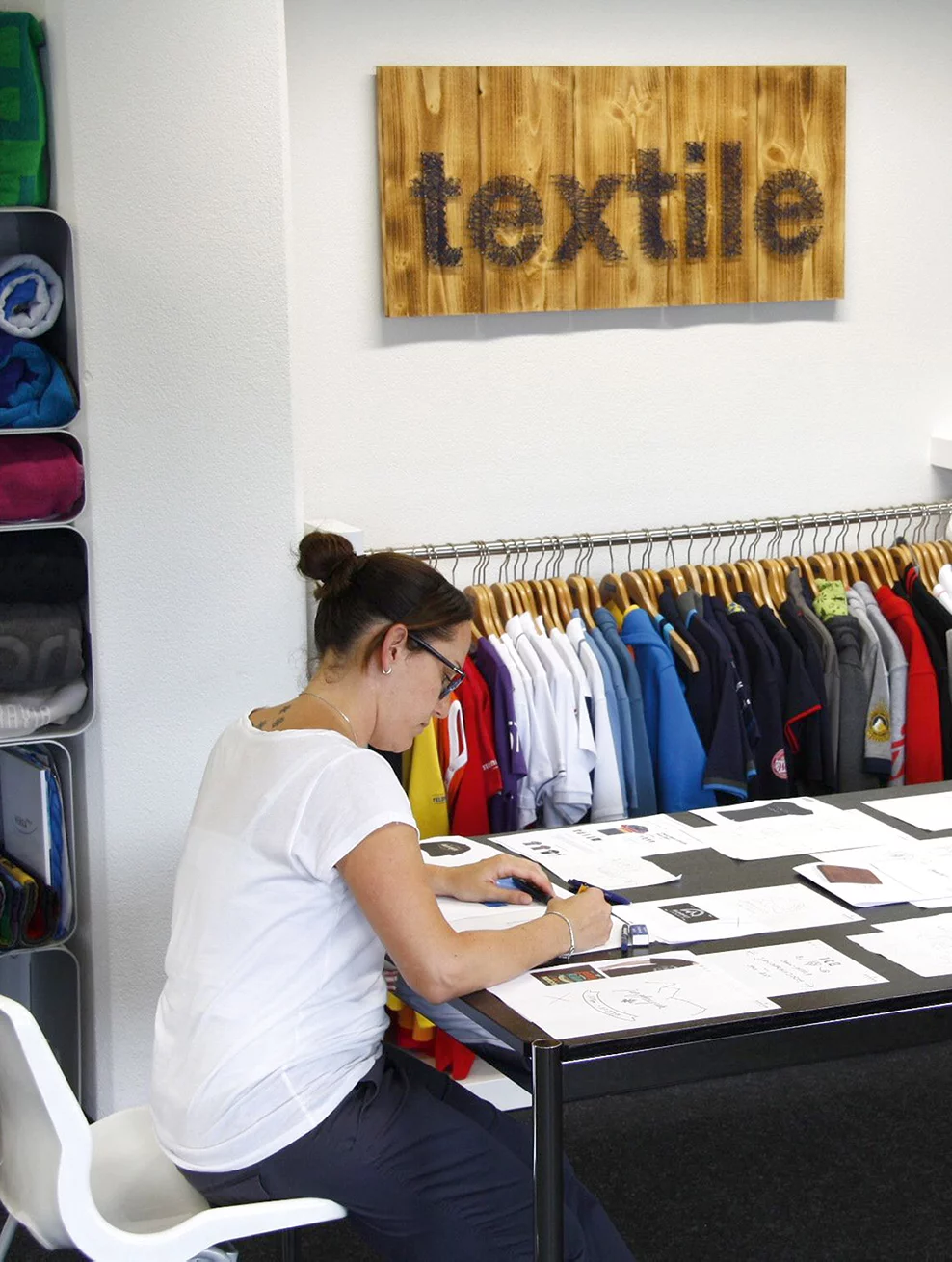
Who should I contact?
Our Pandinavia Textile Team will be happy to work with you to develop suitable corporate wear and support you throughout the entire production process. You can find a brief introduction to the team and our textile expertise on page 28 “Textile team”.
Tel. 043 266 10 47
Mrs. Susanne Spiess or
Mrs. Naomi Habisreutinger
textile@pandinavia.ch
pandinavia-textile.ch
Our tip
Involve your employees in the selection of the collection!
Clothing that is prescribed from above but not accepted or only reluctantly accepted by employees does not fulfill its purpose. In smaller companies in particular, if you already know roughly what you need, you can ask employees for their opinion on which items they think are most appropriate and which they like best. This generates acceptance and reinforces the desired identity-creating effect of the collection.
effect desired with the collection.
And: why not let one or two employees try out the selected collection? Our textile team will be happy to advise you on samples and patterns.
Small checklist
✓ Select items of clothing
✓ Determine sizes
✓ Select color according to defined house color, secondary colors if necessary
✓ Determine number of items per employee
✓ Decide on logo, lettering or name print
